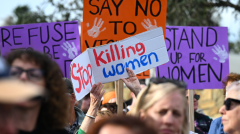Jane knows all too well the value of palliative care nurses.
Key points:Palliative care advocates are calling for political parties to commit to more funding for the sectorAccording to a KPMG report, demand for palliative care will double by 2050, but there are concerns staffing won’t keep upExperts say better resourcing end-of-life care would ease pressure on other parts of the health system
“When I first heard that they wanted to put me in palliative care, I thought ‘that’s just end of life’,” she said.
“But it actually isn’t. It’s helping you enjoy life ’til the end of life, which is absolutely amazing.”
For those who are able to access regular palliative care, it can make the final weeks and months more positive and comfortable. For the community, it eases the pressure on overstretched hospitals.
Palliative carers have not just helped her deal with the physical pain of pancreatic cancer, but also the mental toll terminal illness can take.
They’ve also helped her plan for her death. she hopes she can die at home.
Ms Jane’s positive palliative care experience has helped prepare her for death.”It’s actually quite funny because when you’ve got mortality staring you in the face, it’s like OK, now I’ve got a choice of what I want to happen whereas if I was in a car accident, there is no choice,” she said.
Her experience has been a meaningful one, but others are missing out on having the same support.
Expanding palliative care would ease pressure on hospitalsProviders say there simply aren’t enough trained staff for the patients who need them. According to a KPMG report for Palliative Care Australia, demand will increase by 50 per cent by 2035 and double by 2050.
As the election gears up, palliative care advocates are urging the major parties to commit to more funding for the sector, and they say it can be cost neutral.
Palliative Care Australia’s budget submission says a $240 million yearly increase to home and community care would allow an extra 35,000 Australians to die in their homes. Last year, a total of 150,000 people died in Australia.
An increase in deaths at home would help hospitals.
KPMG analysis for the sector predicts it would result in 28,500 fewer emergency department visits and 200,000 fewer hospital bed days. And while this is
Read More





